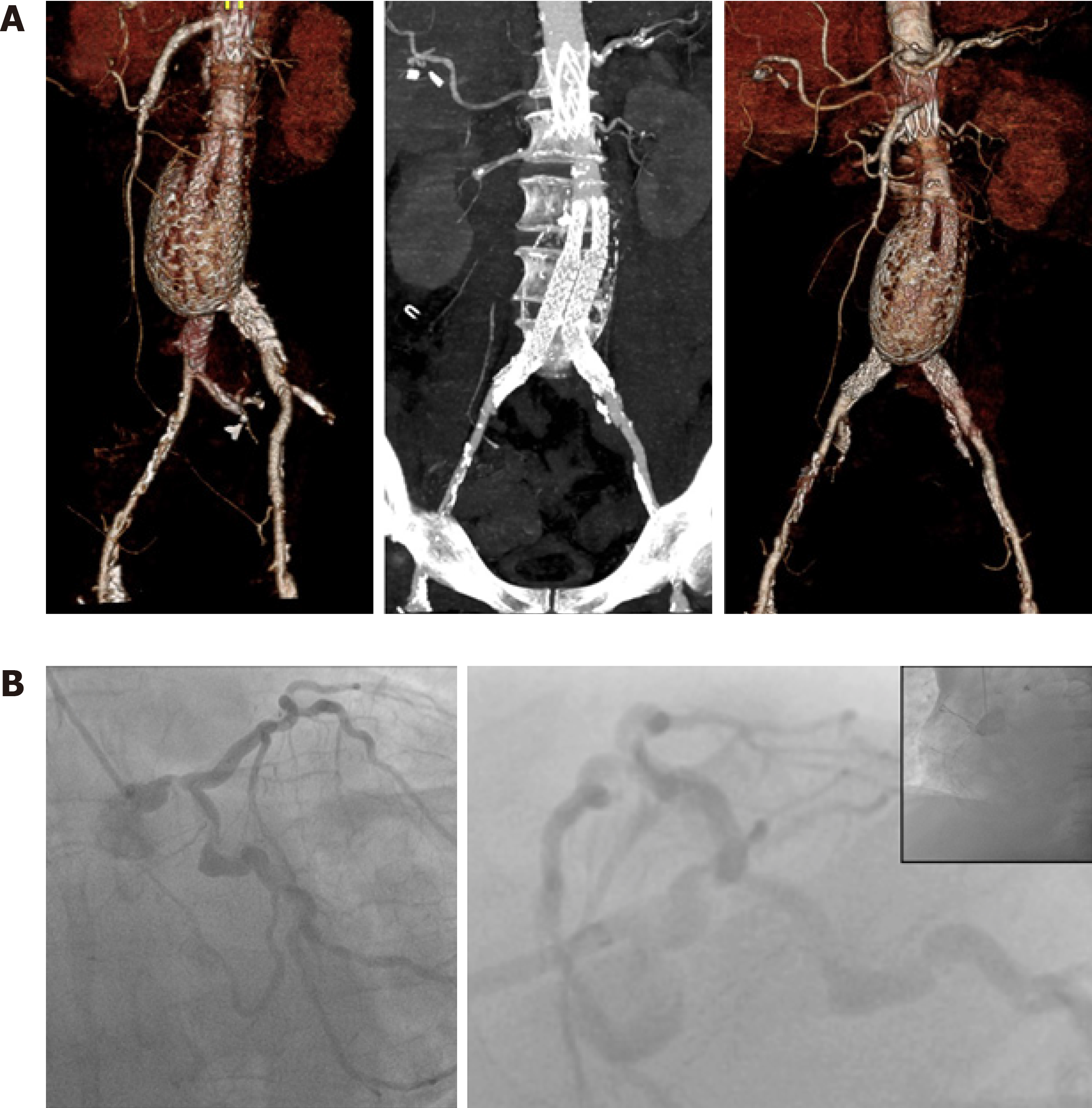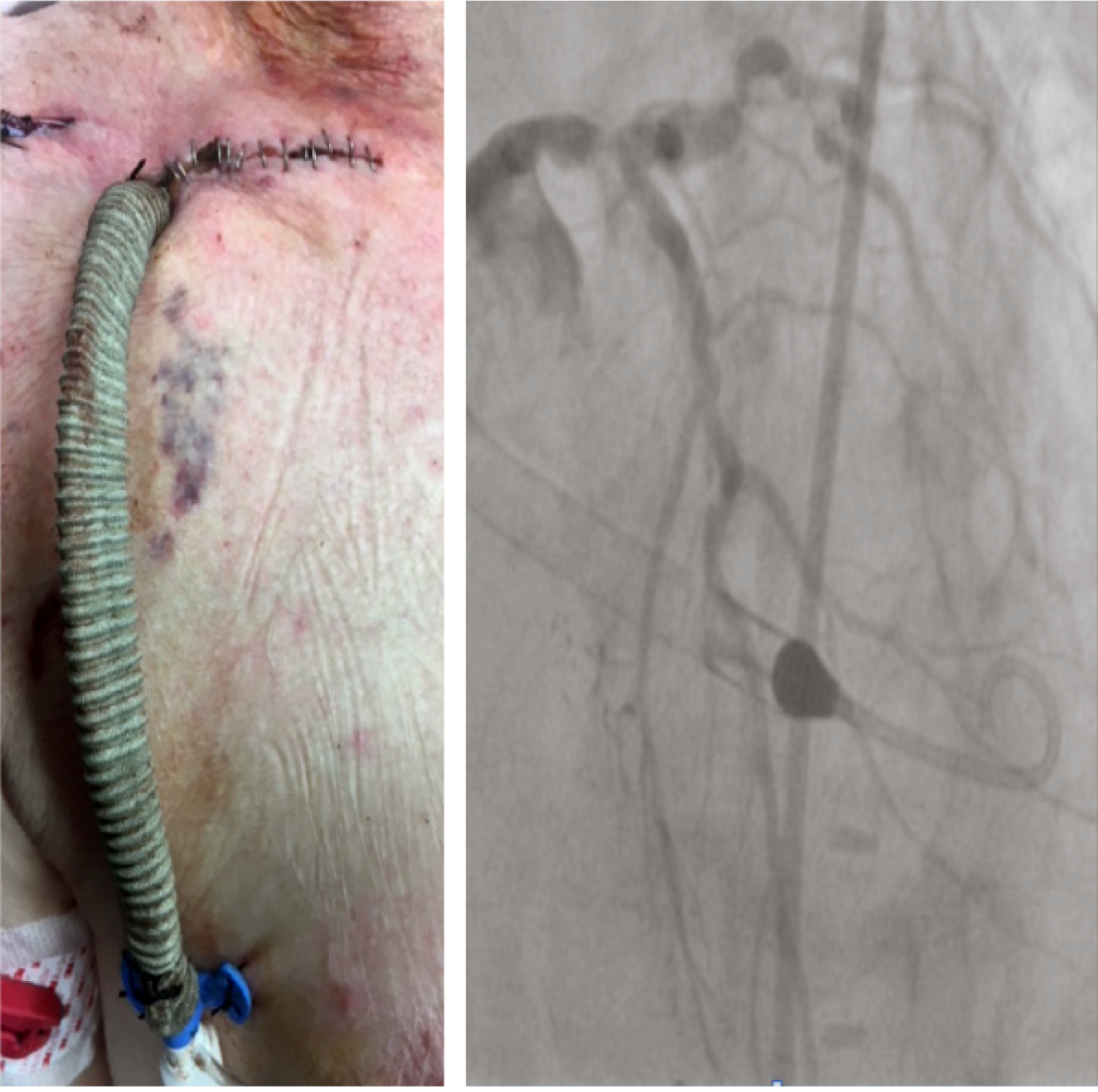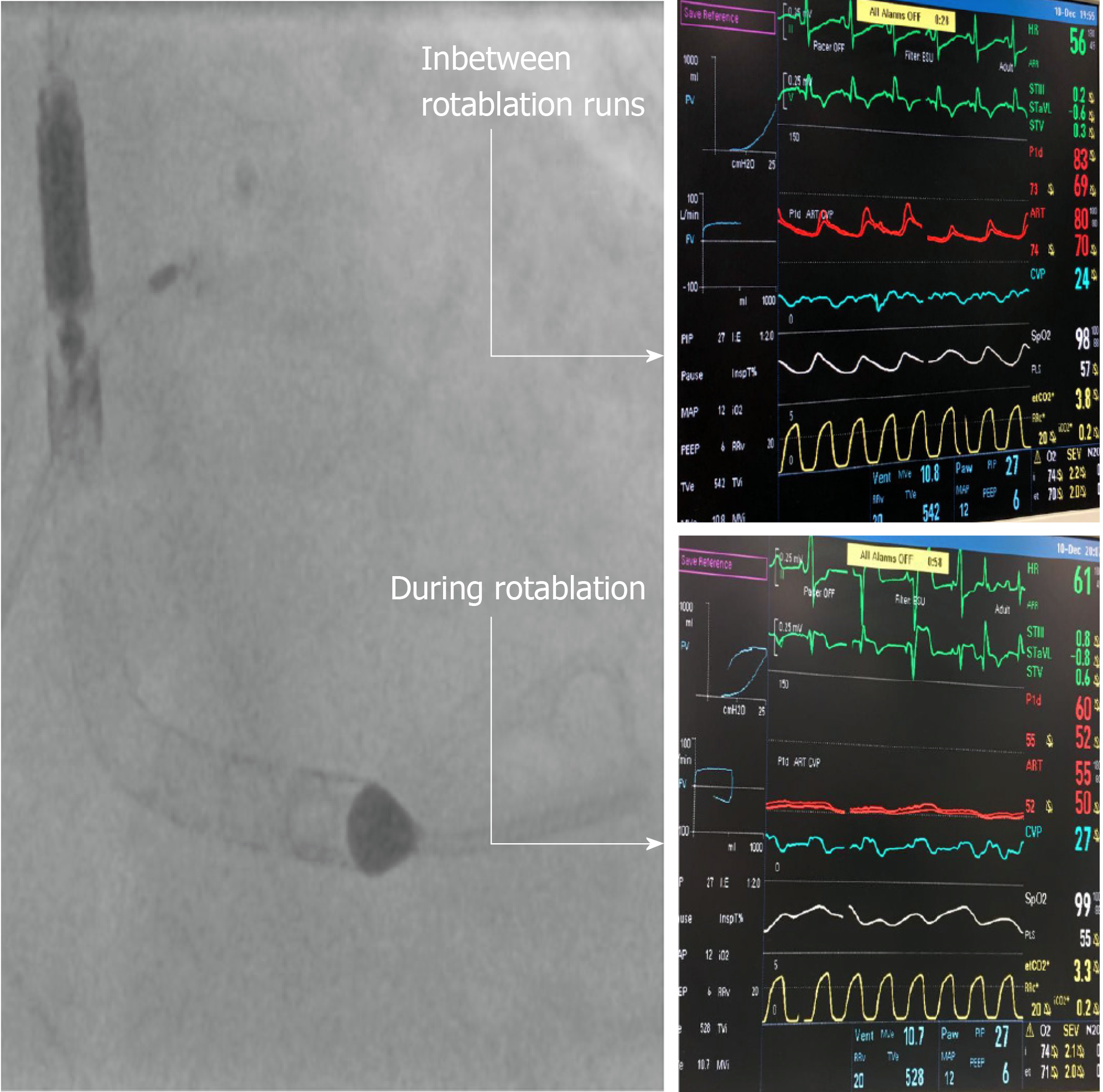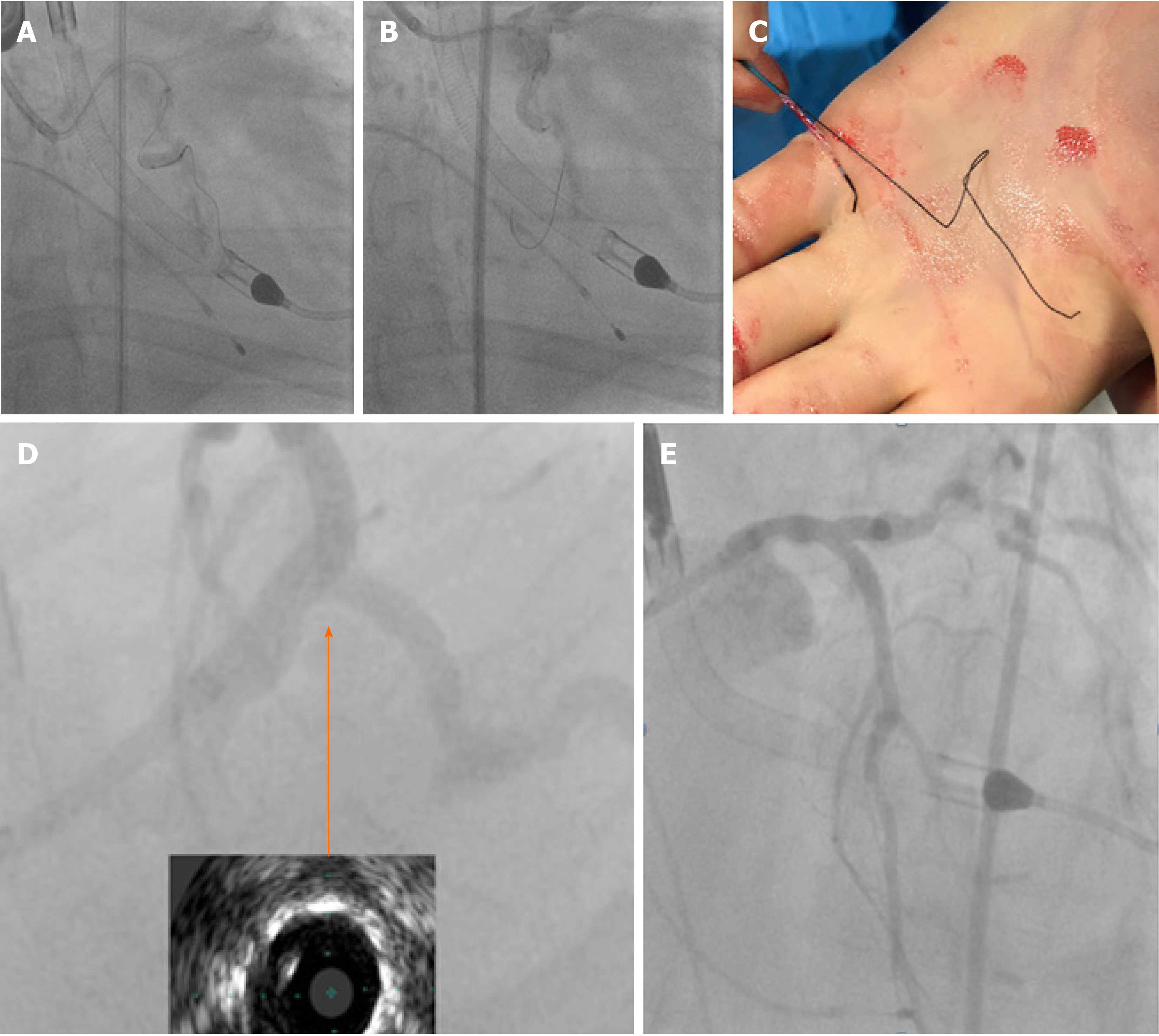Copyright
©The Author(s) 2020.
World J Cardiol. Apr 26, 2020; 12(4): 155-160
Published online Apr 26, 2020. doi: 10.4330/wjc.v12.i4.155
Published online Apr 26, 2020. doi: 10.4330/wjc.v12.i4.155
Figure 1 Heavily diseased peripheral and coronary vascular trees.
A: 3D reconstructions of abdominal and ilio-femoral arterial systems showing previous abdominal aneurysm, and endovascular aneurysm repair alongside the extensive ilio-femoral disease; B: Initial coronary angiogram demonstrating tight distal left main stem and proximal left circumflex calcific disease. The right coronary artery is a chronic total occlusion.
Figure 2 A 10-mm silver-coated Dacron graft was anastomosed to the subclavian artery and an Impella 5.
0 was inserted.
Figure 3 During rotablation runs with the 1.
75 mm burr the pulsatility was lost, however, the mean arterial pressure was maintained due to the presence of the Impella.
Figure 4 After a stormy procedure a good angiographic and intravenous ultrasound result was obtained.
A: Support issues despite use of guideliner leading on to stent dismounting off its balloon undeployed after it got trapped on a calcific bend; B: Localised small perforation/dissection at the distal left main; C: Extreme left circumflex tortuosity causing deformation of Choice PT XS coronary wire and balloon trapping on the wire; D: Spider view and intravenous ultrasound in distal left main stem showing good stent expansion and apposition; E: LAO cranial view showing good final left main stem Culotte result.
- Citation: Panoulas V, Monteagudo-Vela M, Kalogeras K, Simon A. Subclavian Impella 5.0 to the rescue in a non-ST elevation myocardial infarction patient requiring unprotected left main rotablation: A case report. World J Cardiol 2020; 12(4): 155-160
- URL: https://www.wjgnet.com/1949-8462/full/v12/i4/155.htm
- DOI: https://dx.doi.org/10.4330/wjc.v12.i4.155
















